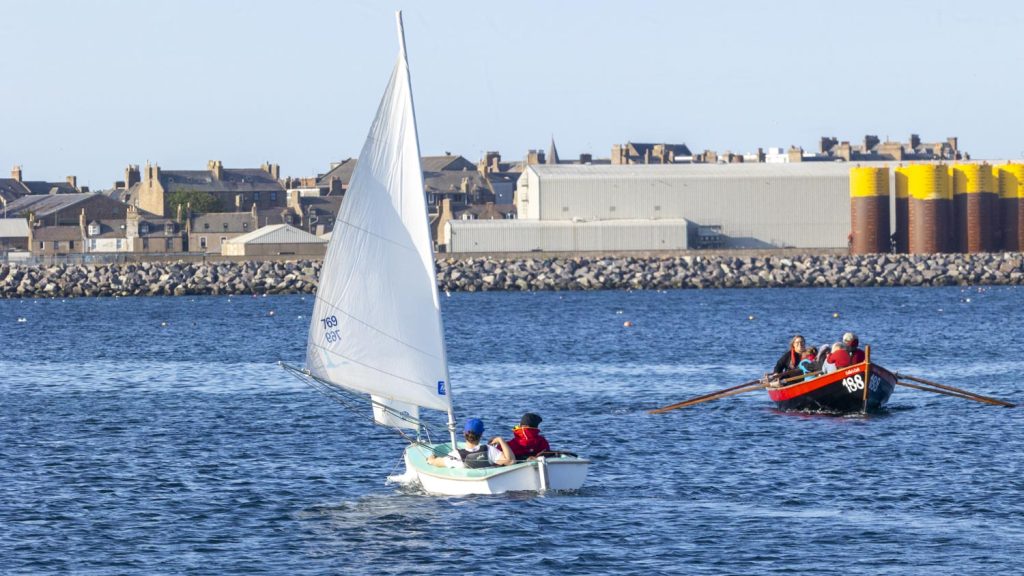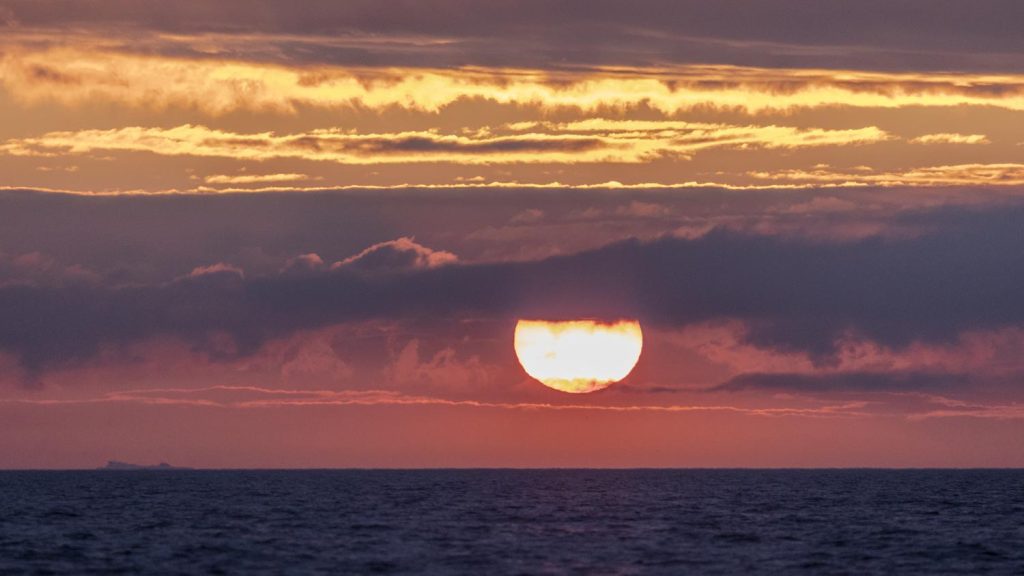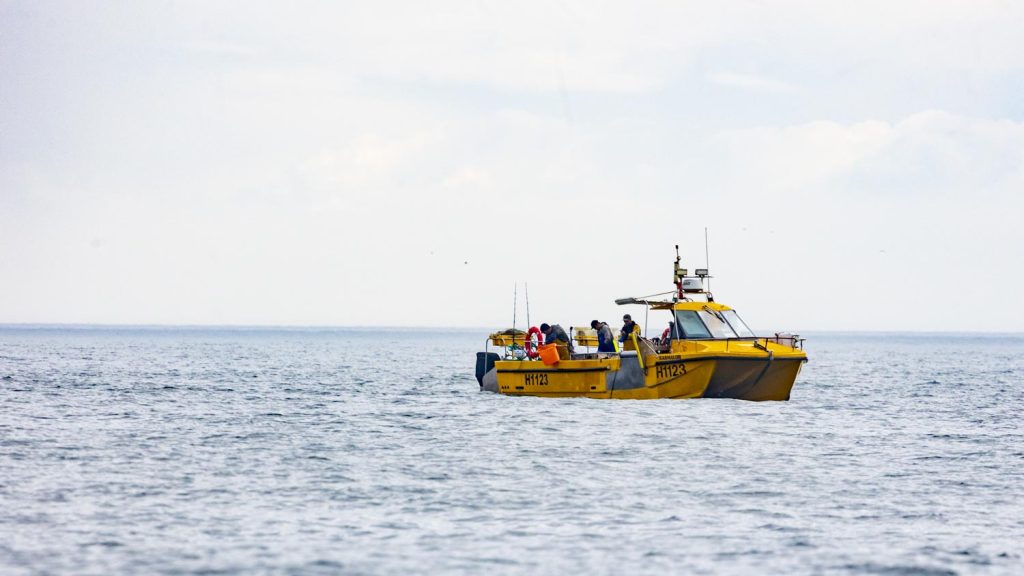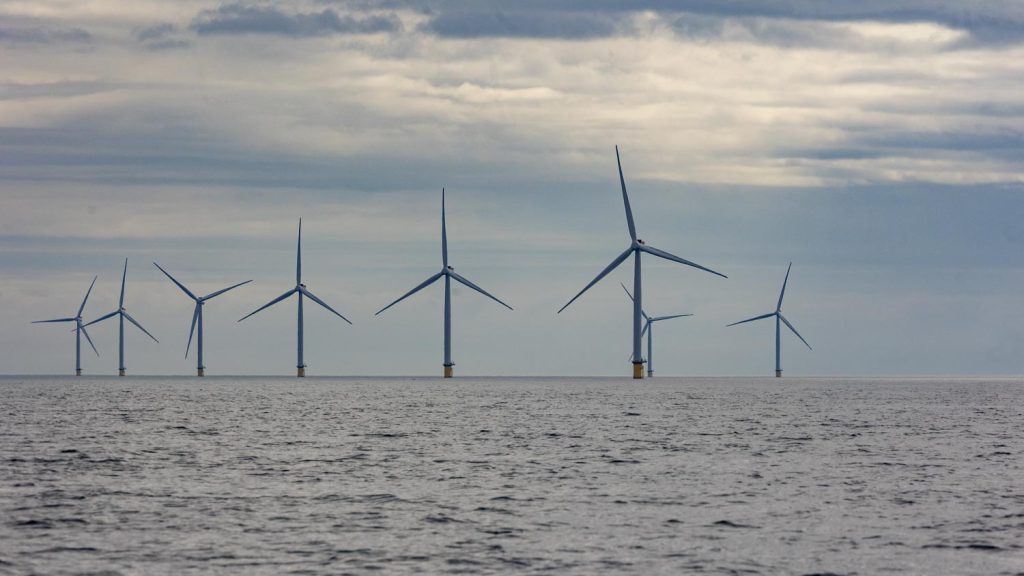I sailed from Peterhead into the darkness of the North Sea night, already so much darker than the nights in Shetland, knowing that perhaps the most testing part of the whole cruise was about to begin. The southern North Sea is littered with wind farms, oil platforms, pipelines, and a density of traffic which should make even the most blasé mariner sit up and take note. I’d hoped to carry the wind all the way to Lowestoft, but only managed to reach Flamborough Head before the wind fell light.

The passage out of Peterhead was unremarkable and Trilleen was under sail before we cleared the massive breakwater arms which enclose the harbour and create a space for commerce, and the most active dinghy club I’ve met yet on the coast, including a brilliant disability section who were sailing effectively and with rigorous attention which is how disability sailing should be.

Unfortunately as we cleared the coast Trilleen was forced closer to the wind than she likes and it was a struggle to keep her sails from stalling out, reducing drive and leaving her wallowing forwards into the mushy sea at a dispiriting three knots. The wind would have been fair for a clear run to Texel in the Netherlands but those of us with disabilities have to choose our destinations with respect to the availability of health insurance, and I have no continental coverage this trip which ruled out what would have been an entertaining diversion.
This stalling progress in a swirling wind, which required the repeated reefing and making of sail all through the night, was tiring. By the time Trilleen was able to free away onto a better track, we were many miles behind where I needed to be to reach Lowestoft before the wind fell away. In view of the need to get to a family event I decided to enter the Humber, but the constraints of entering a port where the tide runs at 4knots at springs – the fastest tides – which of course it was, together with the need to navigate what is one of the busiest port complexes in the UK with around 40,000 movements per year made for some swift planning of a couple of intermediate stops.

The first was the Bay of Filey where I came to an anchor in hard sand, just off what looks like a really pretty village. The holding was excellent although the anchorage was not restful because unforecast, the wind came on to blow 25 knots offshore for a few hours and I felt obliged to sit and watch Trilleen to ensure she didn’t drag. Then after a few hours the tide turned fair round Flamborough Head and we slipped out into the darkness for what promised to be a motor south.
All through that night passage down the cliff front at Flamborough, the darkness of the night was repeatedly interrupted by small alarmed splashing, followed by the syncopated whistling of tiny wings as flight after flight of puffins fled Trilleen’s approach, lurching desperately into what flight their bulky bodies permit. As we rounded the head, a breeze came in, and we were able to sail well south towards Spurn Point.
The distances involved meant the the tide turned foul before I reached the Traffic Separation Schemes at the Humber, and so I kedged on the shelf among the many many lobster pots and aside from having to move when we swung in the tide and got unpleasantly close to one of marker buoys for a pot string. This anchorage wasn’t peaceful either, becuase the fishing boats servicing their pots kept triggering the AIS alarms and rousting me from what shallow slumber I had managed. A few short hours later it was time to plug the tide towards the estuary mouth, with the intent to reach it one hour after low water and then ride the tide to Grimsby.

The estuary was incredibly busy, with heavy lift vessels in both directions, and a plethora of other large ships in transit both in and out of the many dock sites at ABP Humber. Vessel Traffic Services were spinning vessels in and out of anchorages, between pilot boarding points, and ultimately into and out of the approach channels. VTS have different approaches to yachts, but Humber were courteous, professional and provided timely and useful advice to ensure Trilleen crossed the lanes safely and without interrupting port operations.
Through the lanes, we turned inwards tracking the southern edge of the Humber, swimming Trilleen up through the accelerating tidal flow, the water so thick with brown rich mud that it had the colour of a chocolate milkshake. That was strangely like a homecoming, since I started my lifetime love affair with tiny yachts on the east coast rivers from the Medway to the Deben – where the waters have the same soft silted character.

In short order I negotiated the free flow of the lock at the Fishdock with the engine throttled right back and the tide carrying me at an alarming rate into the marina of the Humber Cruising Association who seem a delightful local association with lovely yard full of members prettifying and refitting, a 35 ton lift, a clubhouse, and marina full of clearly much used boats. Trilleen will rest here for a few nights while I travel, and then return to push the final legs of the journey back to to Cowes
